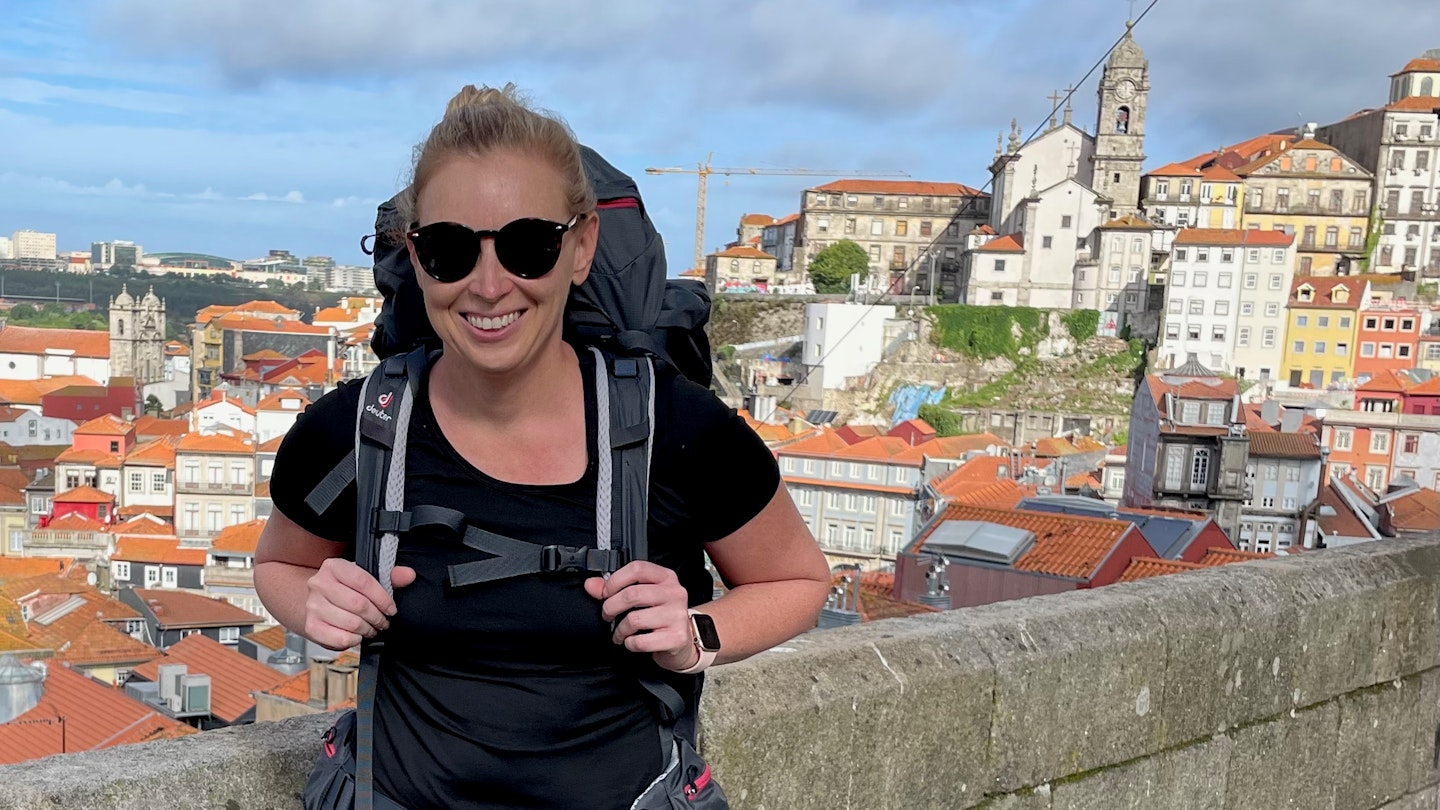Walking the Camino de Santiago: My Experience on the Portuguese Way
While the global pandemic halted travel, I dreamt of spending weeks walking the Camino de Santiago through Spain. In early June 2022, I finally made that dream a reality, following the Portuguese route from Porto to what is believed to be the resting place of St. James the Apostle in Santiago de Compostela during one of the busiest years on record.
A sweaty, stinky, sloppy, exhausted mess, gripping the cardboard tube holding my Compostela, I ended the pilgrimage in front of the desk clerk at my luxury hotel hopeful one last time that, as pilgrims say, “the Camino would provide.”
I had arrived hours before check-in but I prayed they could find me a room as soon as possible so I could get a much-needed shower, nap, and food — in no particular order of priority.
My rough condition was the result of a 260 km (161 miles) journey following the Portuguese Way through Portugal and Spain, an adventure I took on with my 45+10L Deuter backpack filled with just the necessities.
Why is it so busy this year?
Dating back to the 9th century, the Camino de Santiago is a pilgrimage to what is believed to be the final resting place of Saint James the Apostle. The rise in the number of pilgrims this year is easily attributable to it being a Holy Year for Saint James. Those who make the trek and walk through the Holy Door are granted a plenary indulgence. Moreover, this summer marks the first season where travel has been “safer” following mass vaccination, leading to a significant rebound from two years of postponed travel plans.
On the day I arrived, the Oficina del Peregrino reported 1,442 pilgrims arriving. On some days this summer, the Oficina has issued more than 2,000 Compostelas, far surpassing any previous years on record.
The increase in pilgrims this year suggests that the Camino is fulfilling our post-pandemic desire for a chance to slow down and travel more intentionally.
Why I chose the Camino de Santiago
My personal intrigue about the Camino de Santiago first sparked in 2018 when I was living in Berlin. The memory of that journey captivated me during the pandemic, prompting thoughts of spending several weeks walking across Europe, meeting new friends, and experiencing the culture intimately.
Throughout the lockdown, I immersed myself in stories about the Camino, which turned into an obsession. I researched itineraries, crafted budgets, and read reviews for gear, all in preparation for my long-awaited adventure.
Why I chose the Portuguese Way
Two rounds of Pfizer, a booster, and two years later, I landed in Porto, Portugal, with my Deuter backpack fresh and unworn.
The Camino de Santiago has several different paths, with the Portuguese Way being the second most popular. Starting in Porto allowed me to experience the beauty of both Portugal and Spain while feeling less intimidated by the prospect of 161 miles over 14 days, including rest days.
What is it like on the Portuguese Way?
The flux of travelers impacted my trip. By June 1, the route was buzzing with pilgrims. I was grateful to have arranged accommodations in advance; however, in the few spots I hadn’t booked, I had to scramble to find lodging. Fortunately, I always found a place, though sometimes it wasn’t my first choice. The Camino, after all, provides.
I met a diverse group of pilgrims, representing various ages, nationalities, body types, and paces. This pilgrimage offers everyone the opportunity to make it their own, whether through choosing specific routes, determining daily distances, or deciding on accommodation types.
Daily Distances
Throughout my Camino, I was conscious of my 8 kg (18 lbs.) pack and the potential for injuries. I primarily aimed to limit myself to around 20 km each day, although my actual distances varied from 12 km (8 miles) to 24 km (15 miles) on different days. I took a much-needed rest day, and in hindsight, I would have benefited from an additional day off earlier in the trek.
Would I recommend a Camino?
Arriving in front of the Santiago Cathedral, I experienced a wave of conflicting emotions, vacillating between excitement about completing my journey and sadness that it had come to an end. Rather than a grand epiphany, I felt an overwhelming sense of gratitude.
The Camino provided me with the chance to slow down and reflect on life, creating a meditative experience. Along the way, I connected with various communities and fellow travelers, many of whom I would never meet again.
In Santiago, I felt proud of my accomplishment and thankful for the opportunity to embark on such a long walk. I joyfully answered questions in the hotel lobby, and once again, the Camino proved to be a source of support and community.





